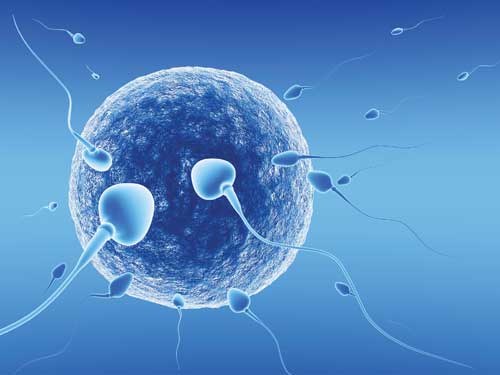 More couples than ever are looking to medicine and cutting-edge technology to help them conceive. Today, more than 1 percent of the babies born in the United States are conceived using the latest fertility treatments, according to the Centers for Disease Control and Prevention (CDC).
More couples than ever are looking to medicine and cutting-edge technology to help them conceive. Today, more than 1 percent of the babies born in the United States are conceived using the latest fertility treatments, according to the Centers for Disease Control and Prevention (CDC).
Dubbed “assisted reproductive technology,” these fertility treatments (which do not include early interventions, such as egg-stimulating drugs) involve manipulation of both sperm and egg.
Why are so many people asking for infertility treatments? One reason is because they can. While the incidence of infertility is not increasing, the treatments for it are more accessible, says Nancy Klein, M.D., reproductive endocrinologist partner at Seattle Reproductive Medicine.
And thanks to the Internet, social networking, 24-hour information sources and good old-fashioned word of mouth, couples are increasingly aware and savvy about procedures that, at one time, might have been a mystery. Add to that a surge in the number of clinics catering to infertile couples, more financing options and more insurance coverage for treatments.
Older moms and fertility
The growing trend in this country to wait until later to conceive affects fertility. According to the CDC, about 20 percent of women in the United States now have their first child after age 35. And about one-third of women over that age have fertility problems, the CDC reports.
As women age, they face a natural decline in their ability to conceive. Klein says the average age of new patients seeking help to get pregnant is 37, although many patients seek treatment sooner. “At 37, there’s not much time left,” Klein says. “And couples who want more than one child should pay close attention to age.” A woman may conceive her first child easily — even at 37 — but then have difficulty when she wants a second child at 39, she says.
Seattle Reproductive Medicine treats women as old as age 50. Usually an older woman will use an egg donor. An egg donor’s age (younger is better) plays an important part in the success of the pregnancy, says Klein. “A 50-year-old, healthy woman might be a better candidate than a woman in her 40s with health problems.”
Evaluating fertility
A woman’s fertility peaks around age 25. At that age, the chance of natural conception is 20 percent in any given month. Fertility declines year by year until age 30, where it takes a much steeper year-by-year plunge. By age 40, a woman’s chance of natural conception is 10 percent at best, Klein says.
Couples who have tried to conceive for a year should seek a fertility evaluation, says Klein. Women older than 35 who have been trying without success for six months should request an evaluation even sooner. Physicians pay special attention to women with risk factors that include pelvic inflammatory disease, endometriosis, irregular periods and a history of chemotherapy or radiation treatment.
A preliminary infertility evaluation includes testing the man’s sperm and examining the female for signs she may have trouble conceiving. If, for example, the woman’s Fallopian tubes are blocked, health care professionals would skip less invasive treatments and go straight to in vitro fertilization (IVF), in which one or more embryos are placed directly in the woman’s uterus, says Klein.
 If tests don’t reveal a medical reason for infertility, doctors might begin treatment with a drug that stimulates egg production, hoping the couple conceives during the most fertile days of the woman’s cycle. The next step would be intrauterine insemination (IUI), which entails collecting semen and placing it directly into the uterus. If IUI fails, the couple could opt for more aggressive injectable drugs, IUI again and then IVF.
If tests don’t reveal a medical reason for infertility, doctors might begin treatment with a drug that stimulates egg production, hoping the couple conceives during the most fertile days of the woman’s cycle. The next step would be intrauterine insemination (IUI), which entails collecting semen and placing it directly into the uterus. If IUI fails, the couple could opt for more aggressive injectable drugs, IUI again and then IVF.
More success with IVF
An increasing number of couples opt for IVF, because success rates have increased while the risk of having multiple births has decreased. Doctors today typically implant one embryo at a time (in the past they’d implant multiple embryos at once), although an embryo can split to produce twins once it’s in the uterus.
What kinds of fertility treatments will we see next? Doctors are seeing advances in the availability of more viable embryos to use in IVF and as a result, increased success rates. “Scientists are also using frozen eggs more effectively,” says Klein. “The ability to freeze eggs gives women who are about to undergo chemotherapy the option of having a baby — using her own eggs — after she completes cancer treatment.”
Freezing eggs also helps egg donors and recipients. Currently, the process involves retrieving eggs from one donor for one specific recipient. With frozen eggs, one donor could serve multiple recipients, decreasing the cost of the procedure in the process.
Maria Bellos Fisher is a freelance writer, older mom and blogger. Her blog, Hereditary Insanity: Surviving family by the grace of madness, is at mariabellosfisher.com/blog.











